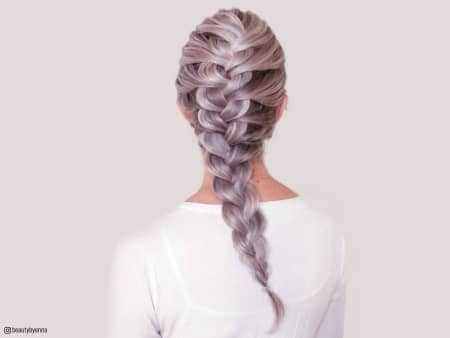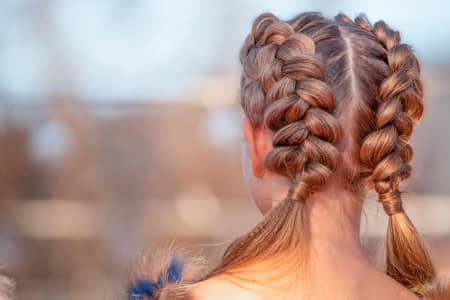
French Braid vs. Dutch Braid: Unraveling the Differences
When it comes to braided hairstyles, two popular options that often come to mind are the French braid and the Dutch braid. While they may seem similar at first glance, these two braiding techniques have distinct characteristics that set them apart. In this blog post, we will explore the difference between a French braid and a Dutch braid, as well as provide step-by-step instructions on how to create each style.
What is a French Braid?

A French braid is a classic hairstyle that is loved for its timeless elegance and versatility. It is a technique that involves weaving three strands of hair together, gradually incorporating additional sections of hair as you move along the braid. The French braid starts at the crown of the head and progresses downward. This technique creates a braid that appears to be on top of the hair, giving it a three-dimensional effect.
The French braid is known for its ability to keep the hair neat and secure, making it a popular choice for both casual and formal occasions. It can be styled in various ways, such as a single French braid down the back, two French braids on either side of the head, or even intricate French braided updos.
What is a Dutch Braid?

The Dutch braid, also known as an inverted or inside-out braid, is another beautiful braiding technique that has gained popularity in recent years. Like the French braid, the Dutch braid involves weaving three strands of hair together. However, the key difference lies in the way the hair is incorporated into the braid.
With a Dutch braid, the sections of hair are crossed under one another instead of over, resulting in a braid that appears to be woven into the hair rather than sitting on top. This technique creates a braid with a more prominent, textured look, adding depth and dimension to the hairstyle.
The Dutch braid is often favored for its bold and eye-catching appearance. It is an excellent choice for those who want to showcase their braided style with a unique and intricate touch. The Dutch braid can be worn in various ways, such as a single braid down the back, double Dutch braids on either side, or incorporated into updos and half-up hairstyles.
Difference Between French Braids and Dutch Braids

Now that we understand what a French braid and a Dutch braid are, let's explore the key differences between these two braiding techniques:
Direction of Crossings
The most notable difference between a French braid and a Dutch braid is the direction in which the sections of hair are crossed over or under. In a French braid, the hair sections are crossed over one another, while in a Dutch braid, the sections are crossed under.
Placement
French braids typically start at the crown of the head and progress downward, incorporating hair from the sides as you move along. Dutch braids also start at the crown, but they tend to follow a similar path, weaving the hair into the braid from the sides.
Appearance
French braids appear on top of the hair, giving a raised and prominent look. In contrast, Dutch braids appear woven into the hair, creating a more textured and pronounced effect.
Texture
French braids tend to be sleek and neat, while Dutch braids have a more intricate and voluminous texture.
Styling
French braids are often associated with elegant and formal styles, while Dutch braids are favored for more bohemian and casual looks. However, both styles can be versatile and adapted to suit various occasions.
How to Do a French Braid?
Step 1: Start by brushing your hair to remove any tangles or knots.
Step 2: Gather a small section of hair near the top of your head and divide it into three equal parts.
Step 3: Cross the right section over the middle section, then cross the left section over the new middle section.
Step 4: With each subsequent crossover, add a small section of hair from the right side of your head to the right section, and cross it over the middle section. Repeat the same process on the left side, adding hair to the left section and crossing it over the middle section.
Step 5: Continue this pattern, gradually adding hair from both sides of your head as you move downwards.
Step 6: Once you reach the nape of your neck, continue braiding the remaining hair in a regular three-strand braid.
Step 7: Secure the end of the braid with a hair tie.
How to Do a Dutch Braid?
Step 1: Brush your hair to ensure it is free of tangles.
Step 2: Gather a small section of hair near the top of your head and divide it into three equal parts.
Step 3: Cross the right section of hair under the middle section, then cross the left section under the new middle section.
Step 4: With each subsequent crossover, add a small section of hair from the right side of your head to the right section, and cross it under the middle section. Repeat the same process on the left side, adding hair to the left section and crossing it under the middle section.
Step 5: Continue this pattern, incorporating hair from both sides of your head as you progress downwards.
Step 6: Once you reach the nape of your neck, continue braiding the remaining hair in a regular three-strand braid.
